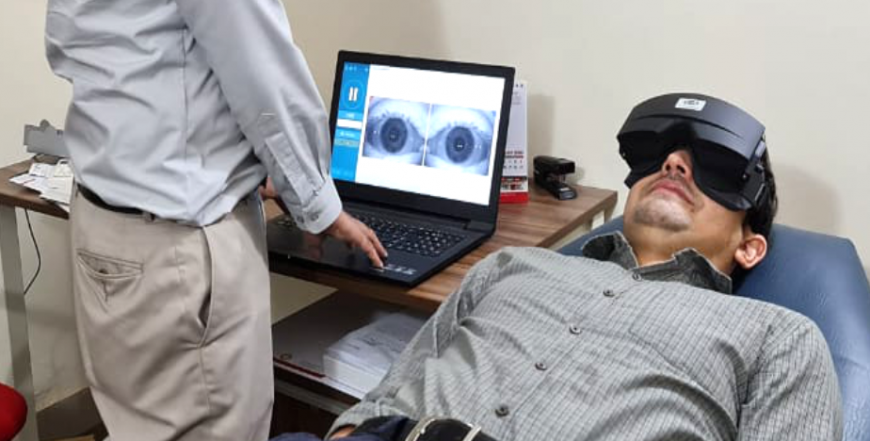
Vertigo
Common Type of Dizziness
- Benign paroxysmal positional Vertigo (BPPV)
- Vestibular Neuritis
- Meniere’s Disease
- Migraine
- Vascular Dizziness
- Perilymphatic Fistula
- Superior semicircular canal dehiscence syndrome.
- Tumors
BPPV is the most common type of vertigo, caused by free floating calcium carbonate crystals in the inner ear.
In BPPV. repositioning manoeuvres are used to move tiny fragments of calcium carbonate crystals (debris) through the canal using gravity.
The Epley Manoeuvre
The patient is seated, with legs fully extended & head rotated 45 degrees towards the affected side.
- The patient is quickly brought into a supine (face up) position, with head extended 30 degrees and still rotated to affected side (patient remains in this position for 1-2 minutes).
- The patients head is rotated 90 degrees to the opposite side, while still maintaining head extension
- (patient remains in this position for 1-2 minutes).
- The patient rolls into a side lying position, and rotates the head another 90 degrees in the same direction, so that they arc now looking downwards at a 45 degree angle (patient remains in
- this position for I -2 minutes).
- Patient is slowly brought back up to a seated position, maintaining the 45 degree head rotation
- (patient holds the seated position for 30 seconds).
- The manoeuvre may be done up to 3 times in succession It is normal for the patient to experience
- dizziness during each step of the treatment.
Benign Paroxysmal Positional Vertigo (BPPV)
- BPPV is the most common type of vertigo, caused by free floating calcium carbonate crystals in the inner ear.
- BPPV may be diagnosed by your physician using a simple in-office test and once positively identified, can often be treated successfully using simple repositioning techniques, such as The Epley Manoeuvre or The Semont (Liberatory) Manoeuvre.
- These repositioning techniques have shown to be very effective, with many studies showing as high as 90% success rates.
The Semont or Liberatory Manoeuvre
- The patient is seated, with head rotated 45 degrees towards the unaffected side.
- The patient is brought into a side lying position towards the affected side, with head still rotated towards effected side (patient remains in this position for 3-5 minutes).
- The patient is then quickly brought back through the seated position and into a side lying position on the unaffected side, with the head held steady the entire time, now facing downward 45 degrees (patient remains in this position for 3-5 minutes).
- The patient is slowly brought back to an upright, seated position.
* It is normal for the patient to experience dizziness during each step of the treatment.
Post treatment instructions for the Epley and Semont Manoeuvres
Patients should wait 10-15 minutes before returning home and should not drive themselves. Following treatment, patients are encouraged to maintain an upright head posture for a minimum of 24 to 48 hours, including during sleep (sleeping semi-roclined in a chair instead of lying flat).
How will you keep safe while you have Vertigo?
- Consult your Physician.
- Hold on to something stable when doing activities that make you bit dizzy.
- Sit down if symptoms start.
- Tell friend & family you get dizzy.
- If you have BPPV, keep going with your BPPV exercise program your symptoms need to get worse before they get better.
- Avoid Driving .
- Avoid Alcohol.
- Try not to let it limit your social life.
